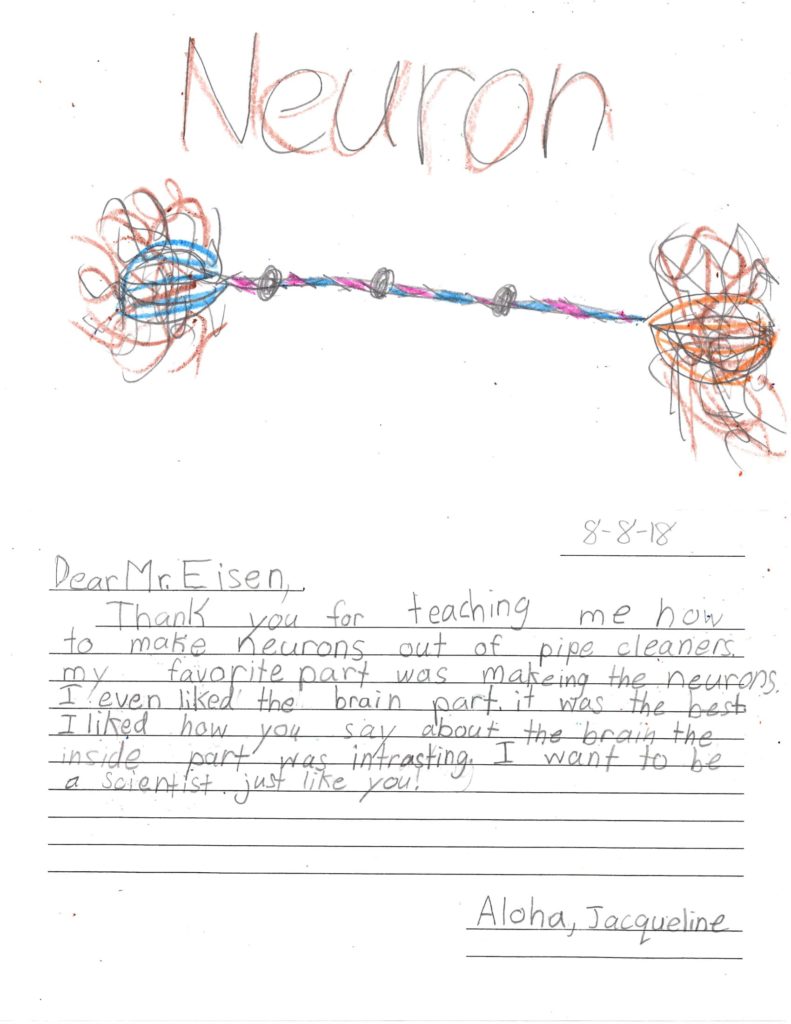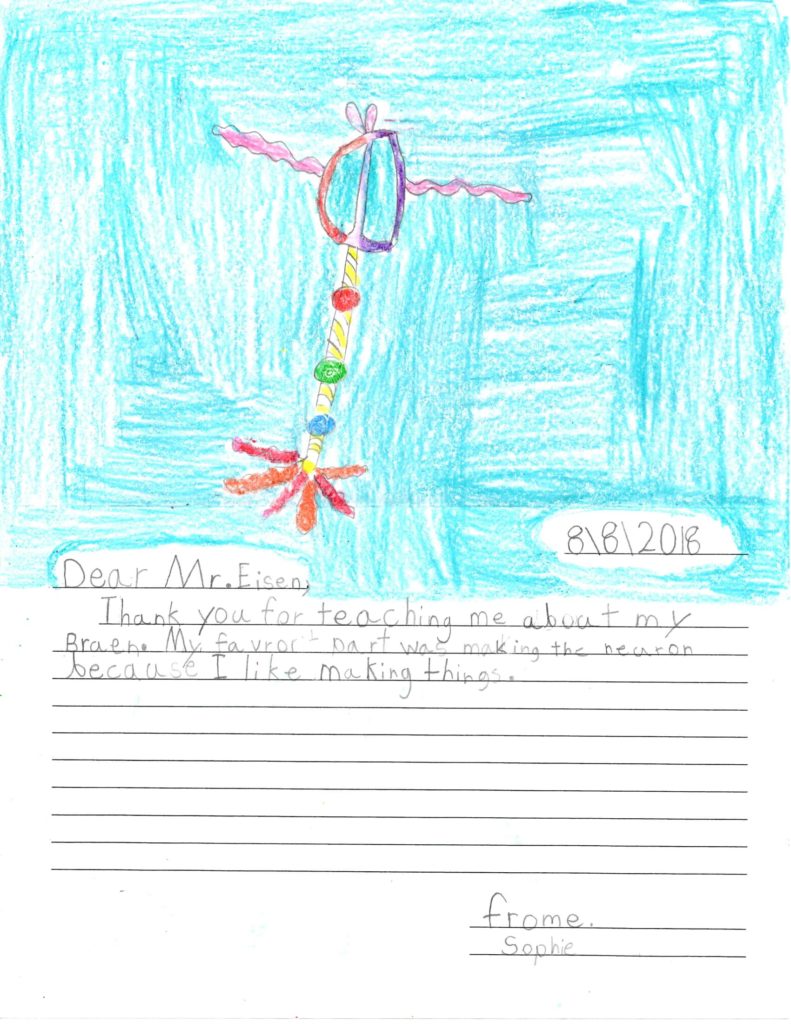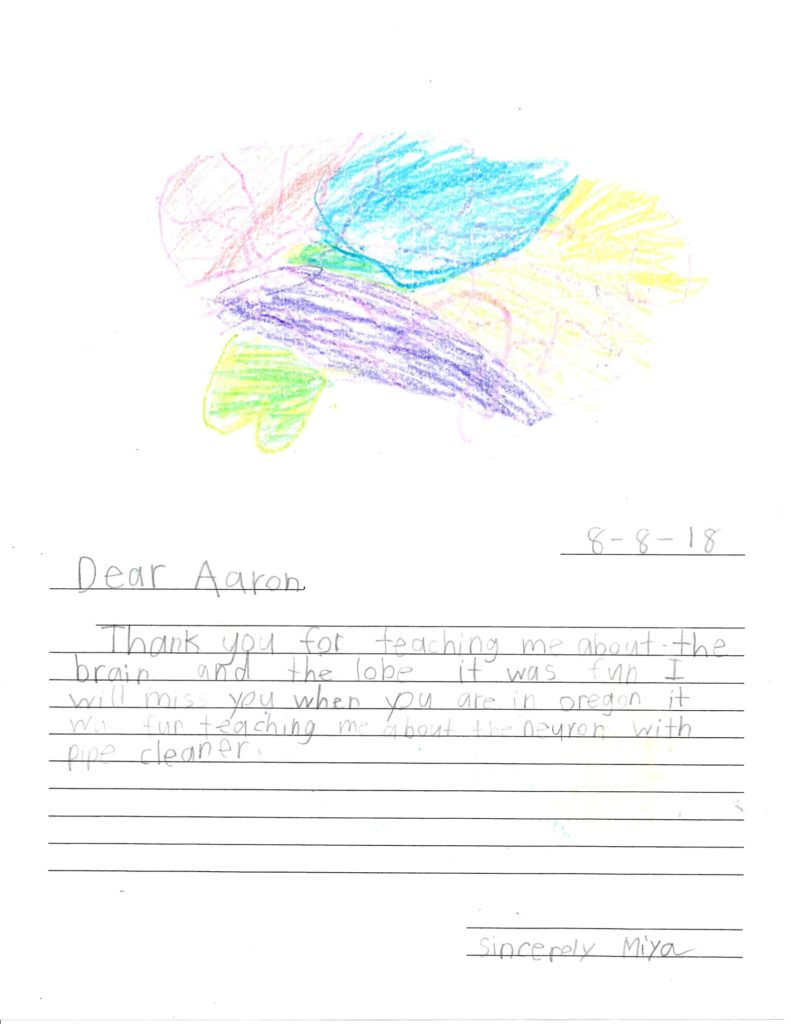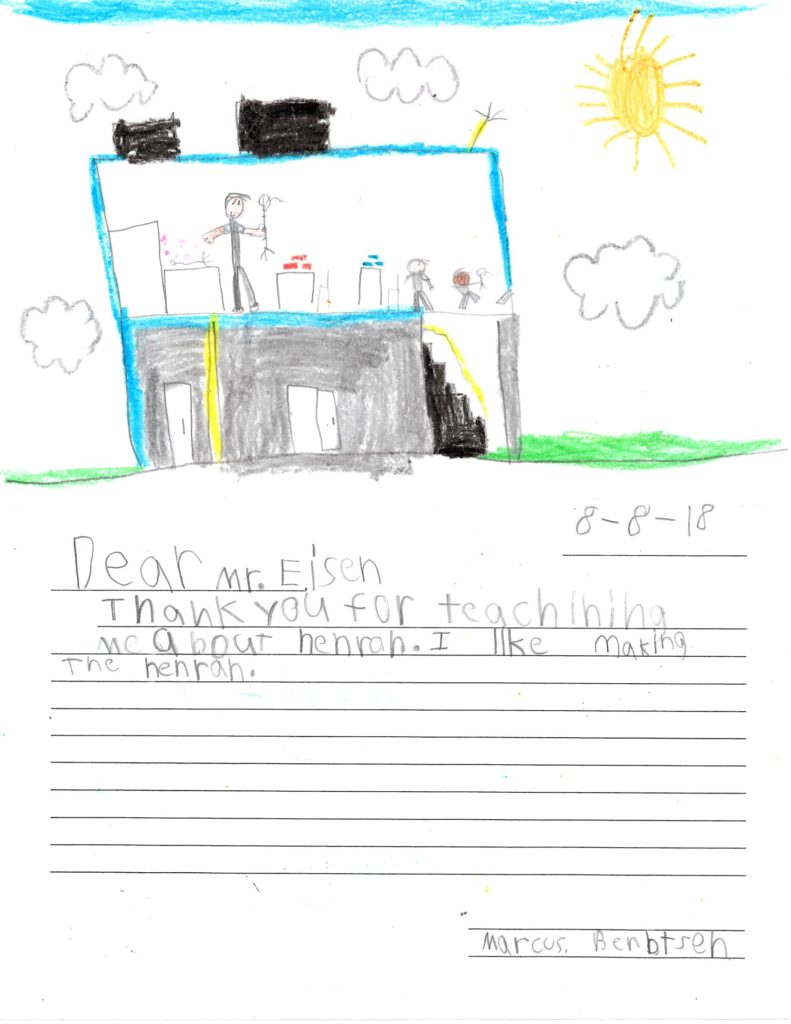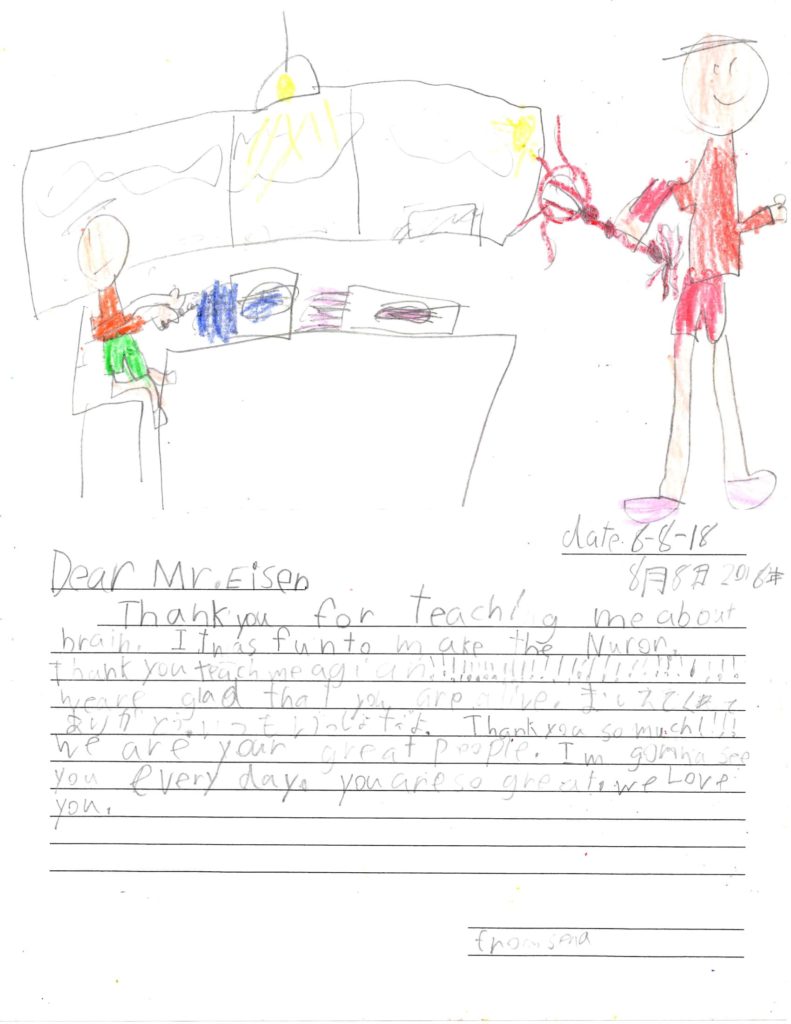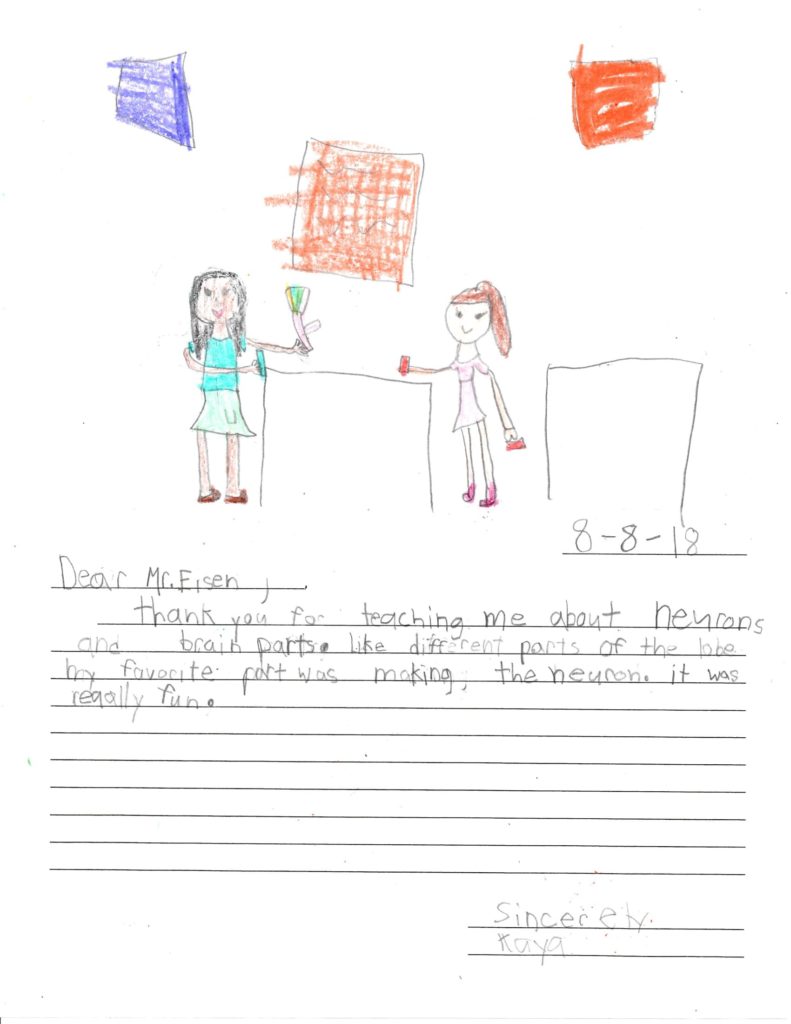Post and pictures by Aaron Eisen, PSU Neuroscience Club
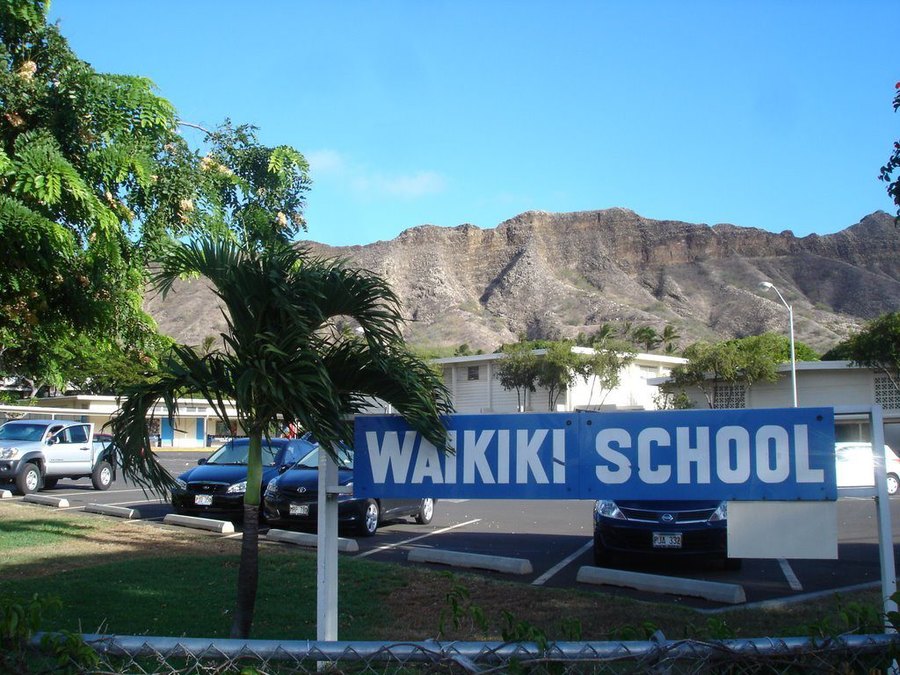
Aloha! The spirit of NW NOGGIN has traveled thousands of miles to the beautiful State of Hawaii. We are growing in networks, just like neurons!

We had the honor of being invited to Waikiki Elementary School to bring art (4000 pipe cleaners!!) and neuroscience to over 150 students in six different classrooms grades 2-5.
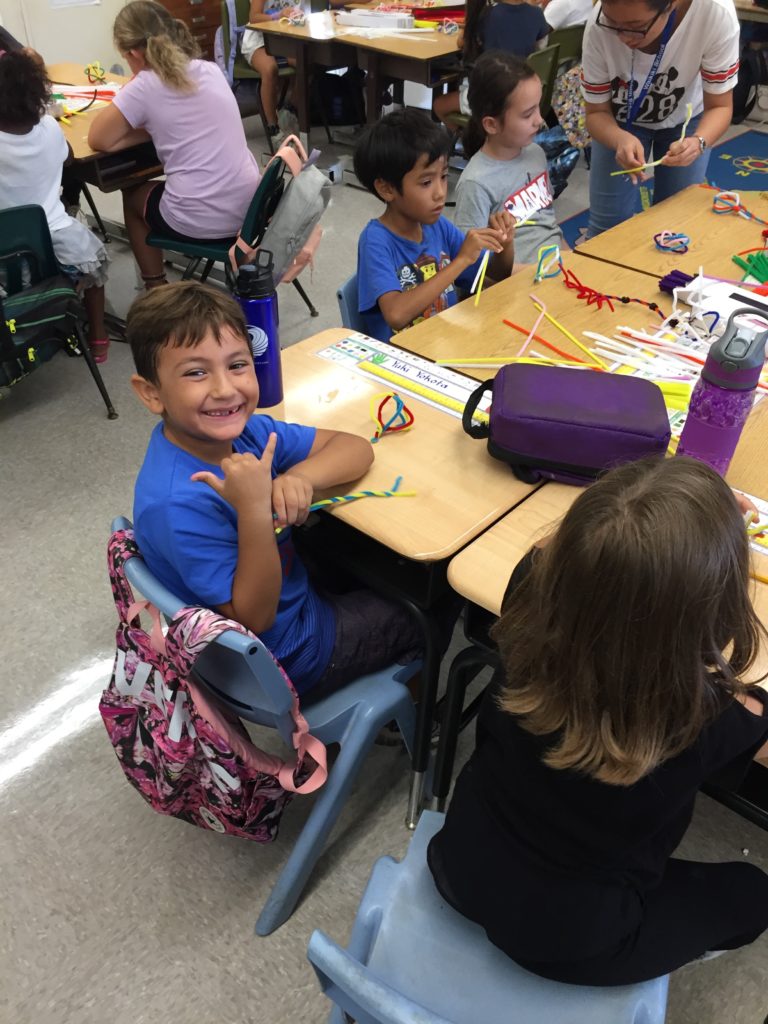

LEARN MORE: RESOURCE: STEAM Art Projects
In the hustle of the first week back to school, the students expressed an overwhelming enthusiasm for aʻo (learning) about something very important, their lolo po’o (brain)!

Together we built neurons out of pipe cleaners, colored diagrams of brain lobes, talked about cool neuron facts, and discussed the brain.

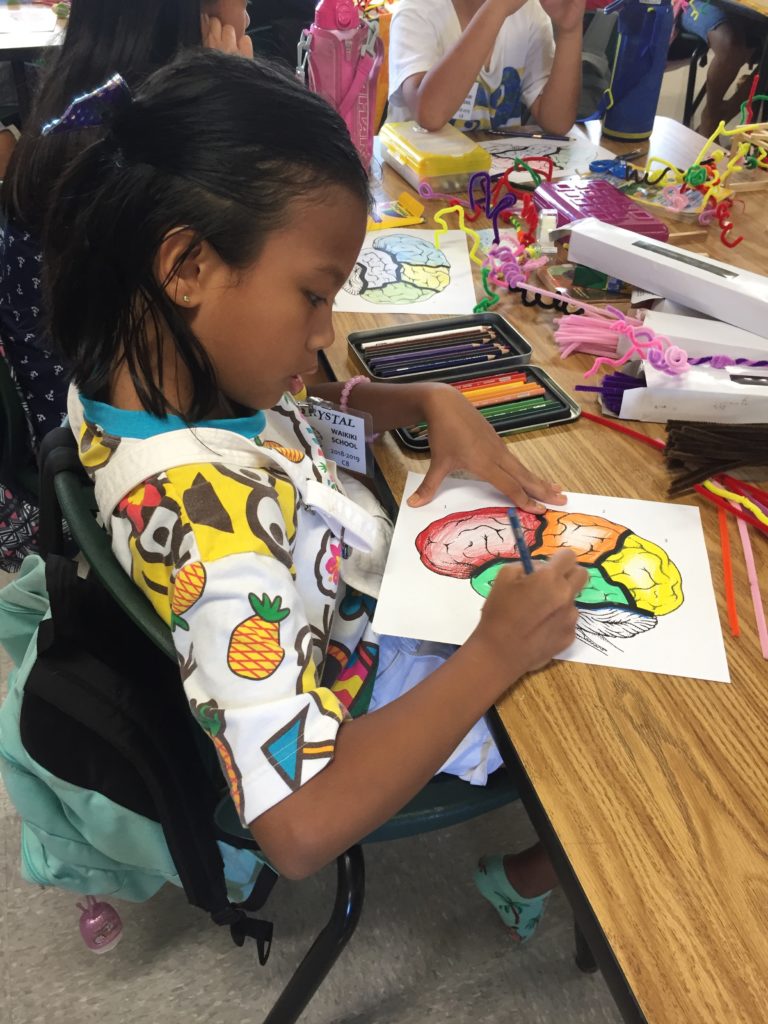
Future neuroscientists, artists, Presidents…
We made new friends and were shown the spirit of ʻohana (family) by Hawaii Pacific Neuroscience, who graciously lent us volunteer support and outreach materials – including a giant diagram of a cerebellum that was 7 feet tall!
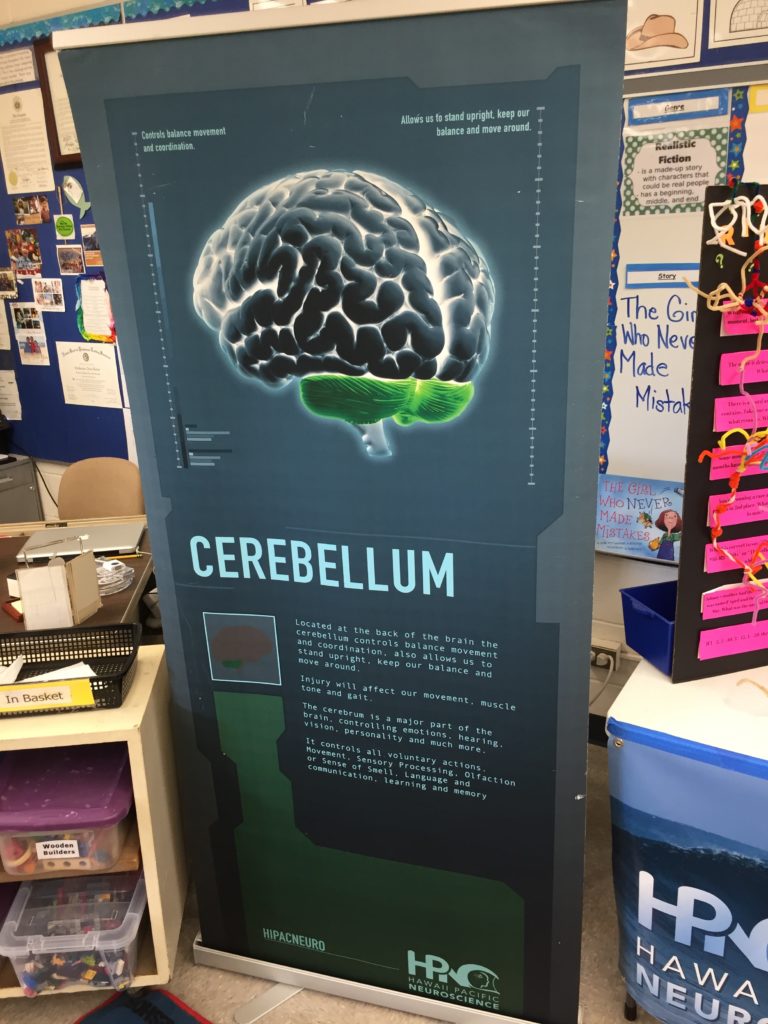
Hawaii Pacific Neuroscience (HPN) is “the leading and one of the largest providers of neuroscience care in the state of Hawaii serving more than 24,000 patient visits in 2014 from Oahu, Maui, Big Island, Kauai, Molokai, Guam and other Pacific Islands.”
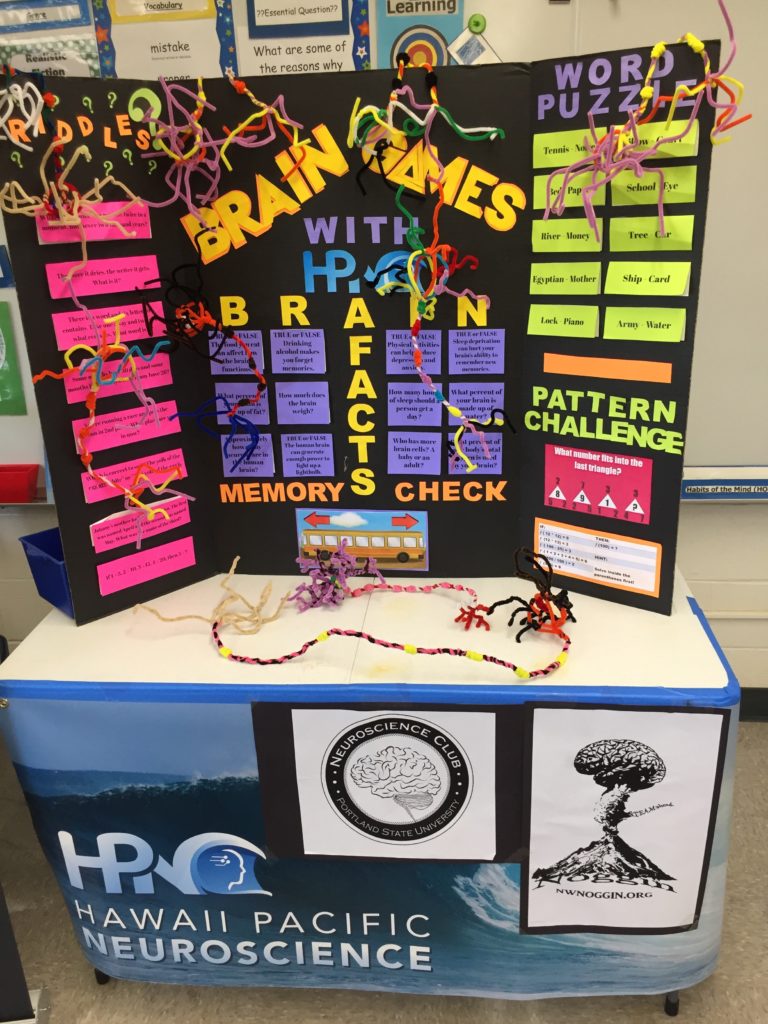
LEARN MORE: Hawaii Pacific Neuroscience mission statement
We were joined by University of Hawaii Manoa students Carol, Yi Yu, Breanne Fong, and Xiaoting Liu who are interns at the Hawaii Pacific Neuroscience Clinic. We also received support from Waikiki school staff members Royce Yoshimura and Arri Nguyen.


We had great fun discussing the brain while the students finished building their neurons. The students were interested in knowing what color the brain actually was. They were also fascinated to learn that neurons release different chemical neurotransmitters to communicate with each other, and we can even see these distinct types of brain cell by staining them different colors!

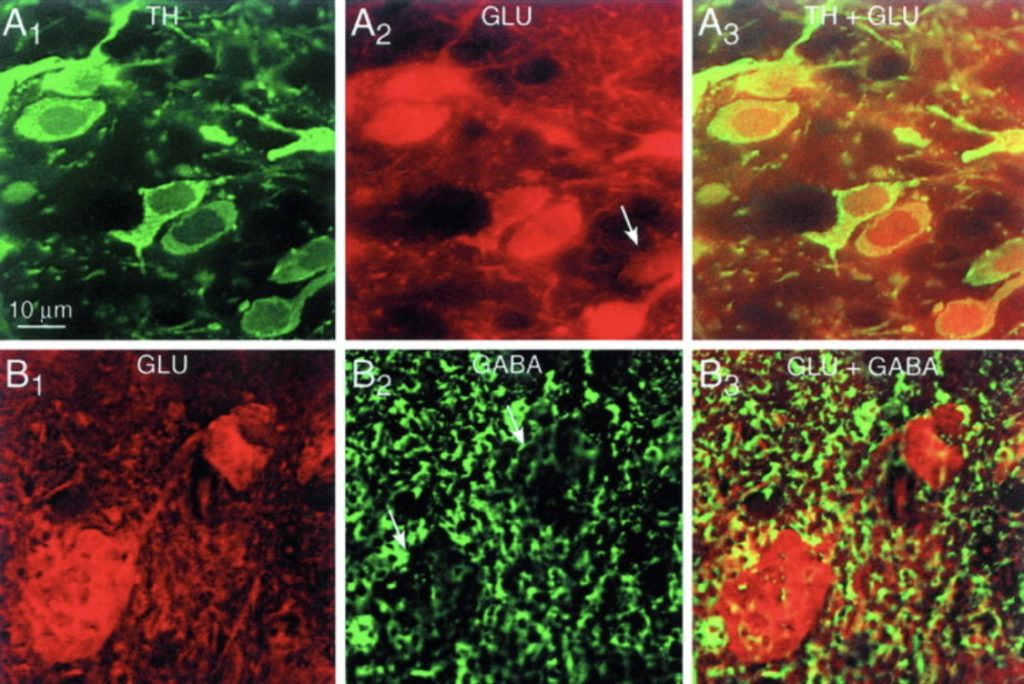
Dopamine releasing neurons (from DA Neurons Make Glutamatergic Synapses In Vitro)


The students were also interested in executive functions (e.g., why do people make bad decisions?), neuroplasticity (why do babies have more neurons (lots more!) than teenagers, or adults?), brain development (how does a brain changes during puberty?), techniques (how do you look at a brain of a living patient?), and brain-related conditions such as coma and syncope.

We are born with 200 billion neurons, but by age 25 we have 86 billion! So what happened to those billions of missing neurons? Is it a good thing to lose brain cells?
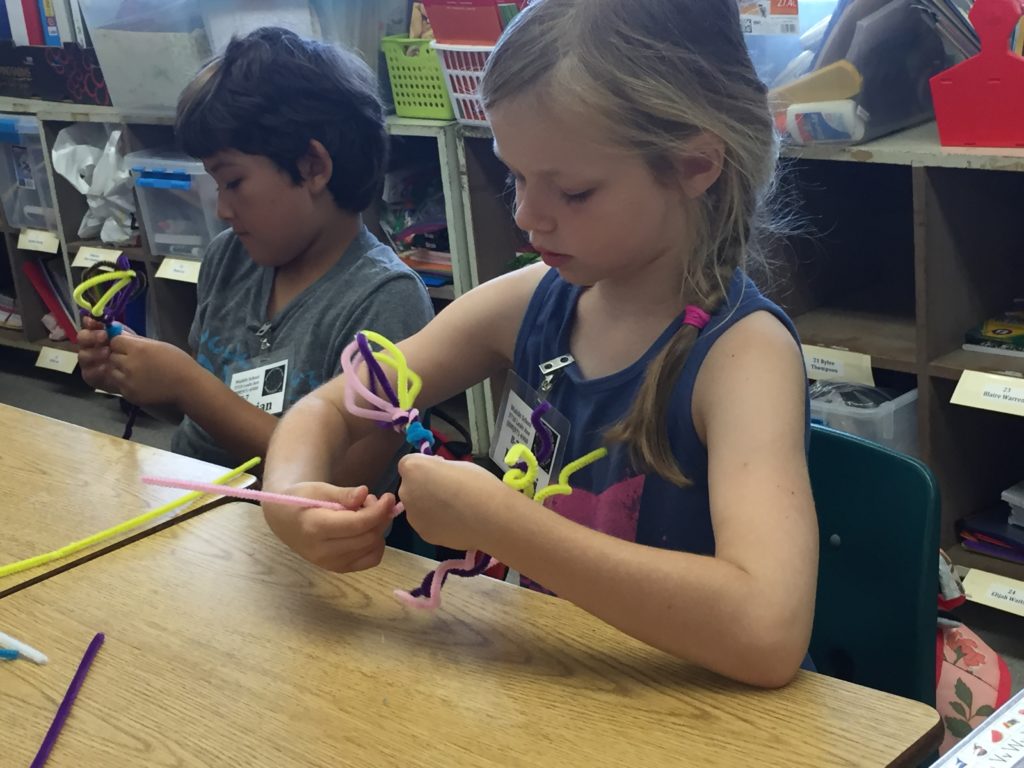
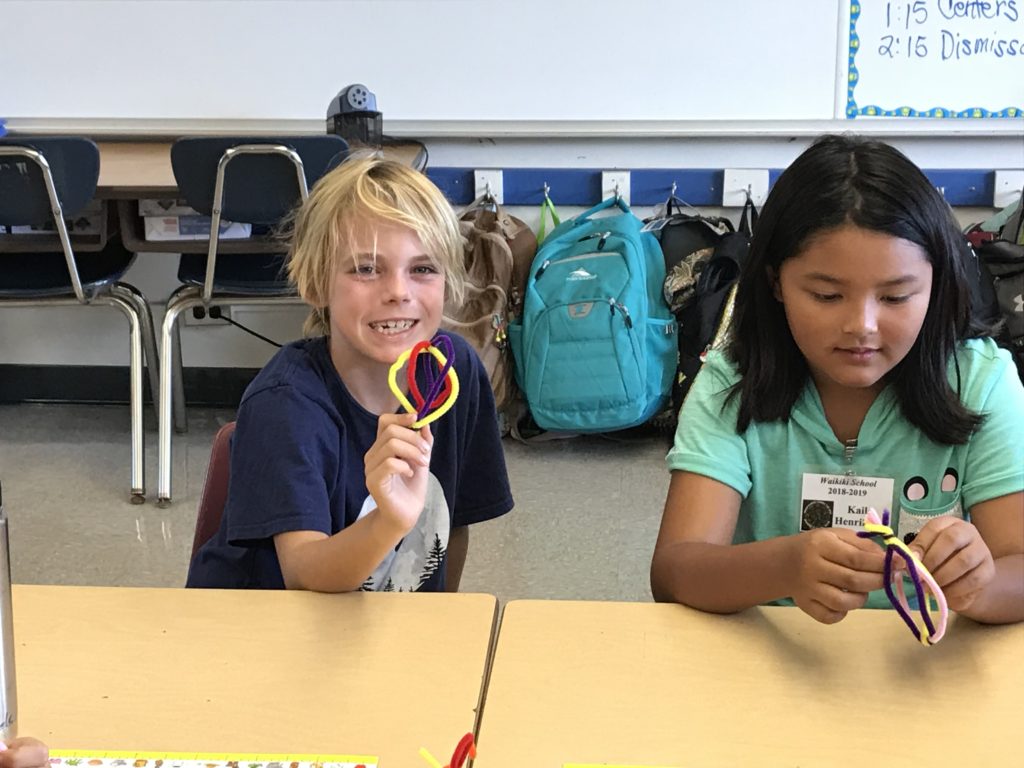
Loss of neurons and synaptic pruning both improve the efficacy of necessary networks developed through exposure to the environment…
LEARN MORE: Brain Development and the Role of Experience in the Early Years
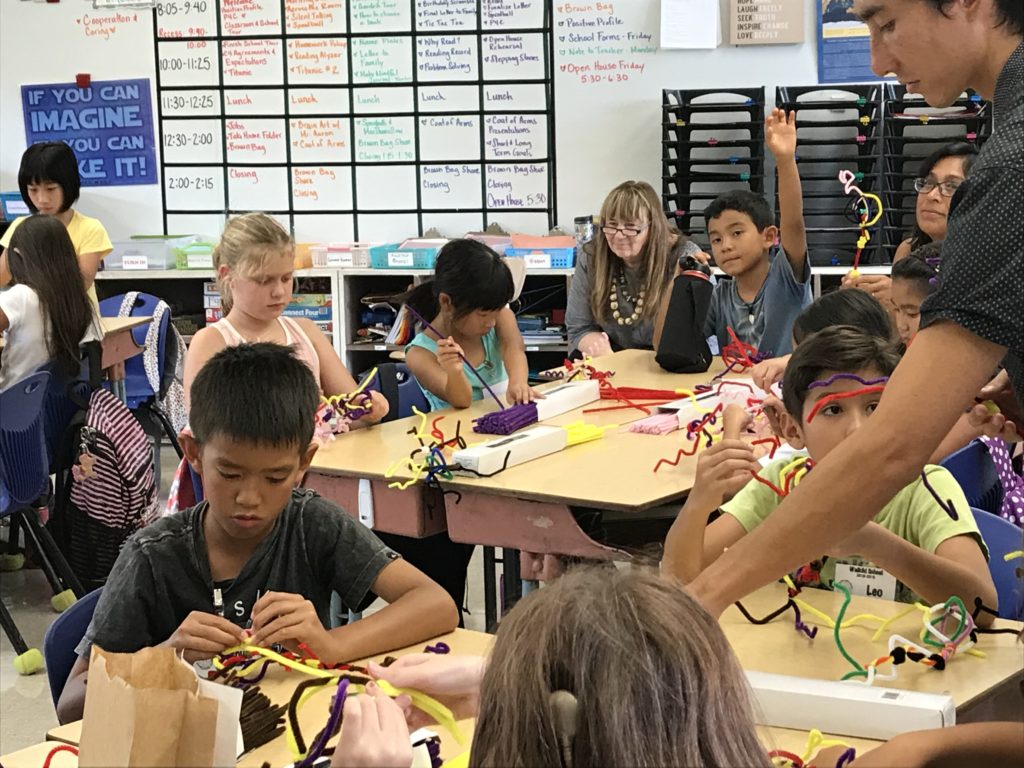
Most neurons are not even in our cerebrum, with its wrinkled cortex – so where could they all be?
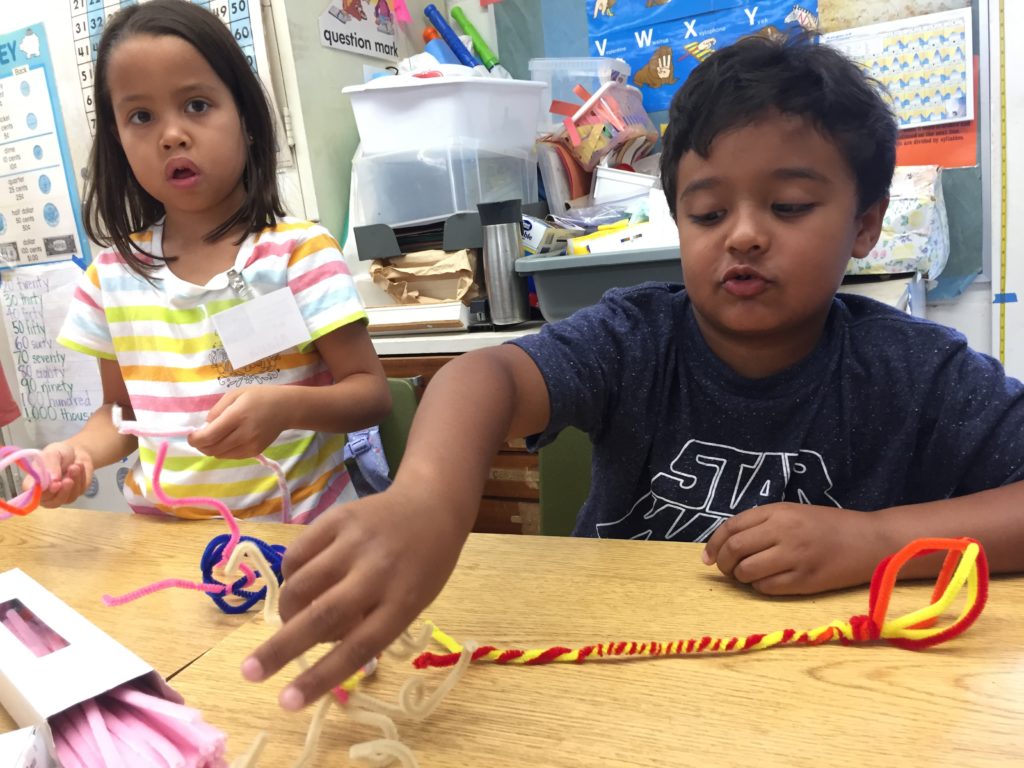
More than 60 billion of our 86 billion neurons are in the cerebellum, a brain region very important for balance and movement.
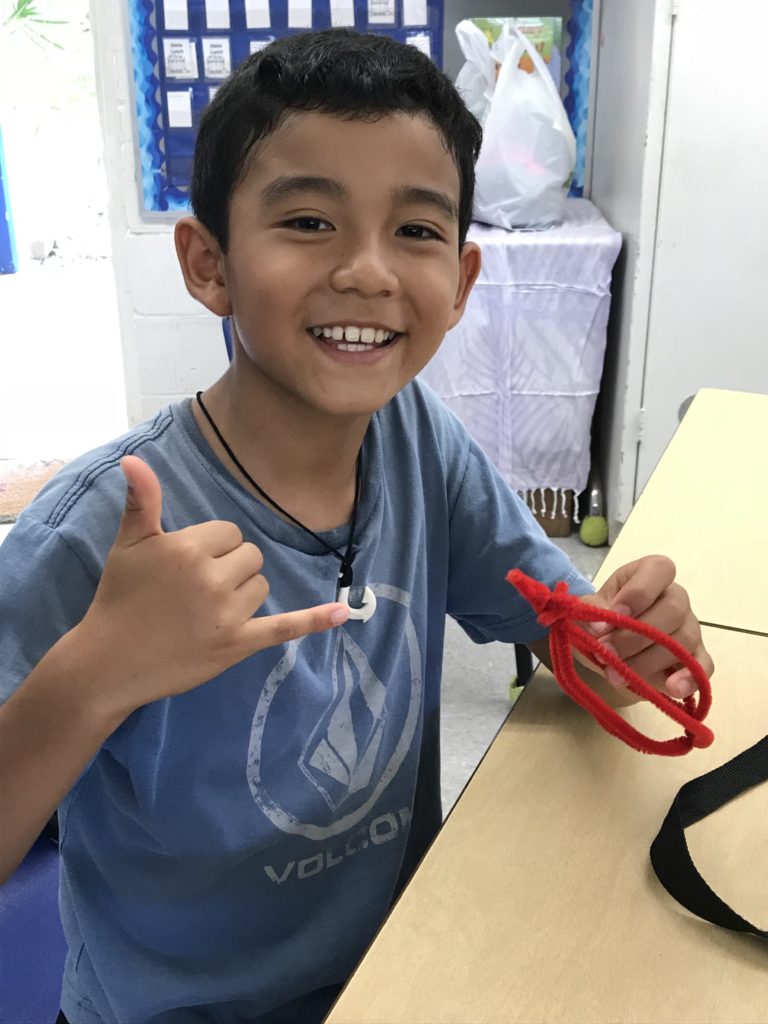
Shoots brah!
LEARN MORE: The role of the human cerebellum in performance monitoring
LEARN MORE: The Cerebellum’s Role in Movement and Cognition
An elephant’s brain is the largest of any land mammal! Its brain has 165 billion more neurons and weighs four times that of a human brain. Since an elephant has such a large brain, why isn’t it smarter than a human? Wait – are elephants smarter than humans? What does it mean to be smart?
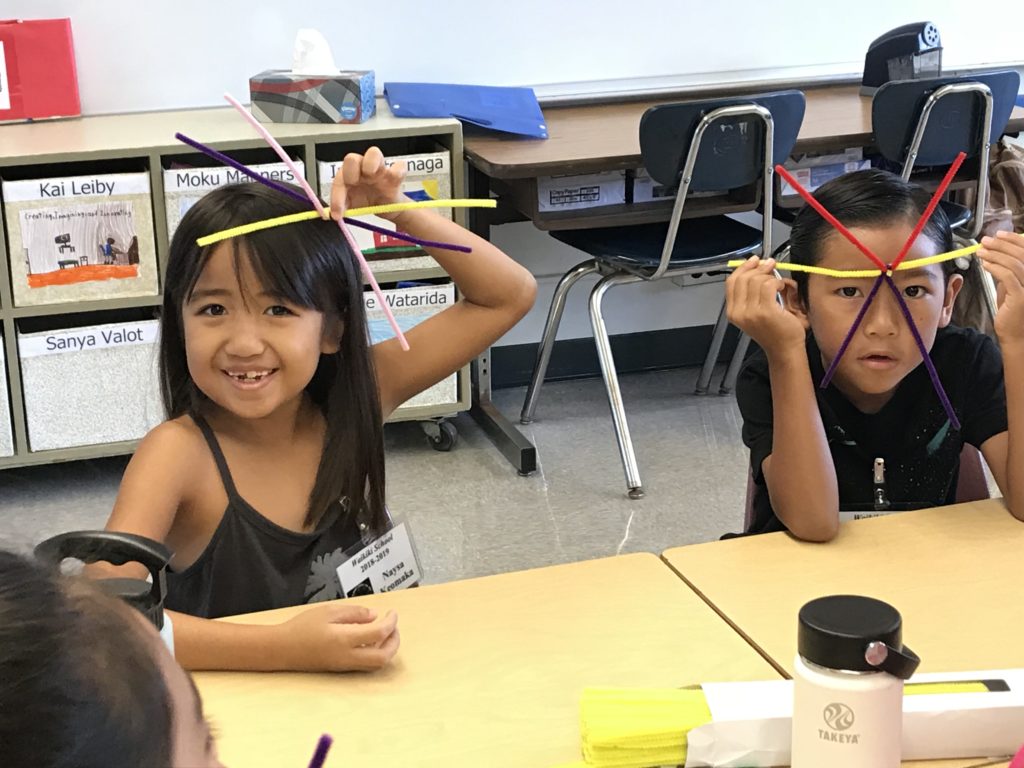
LEARN MORE: Soup for Brains!
What does a giant squid have to do with neuroscience?
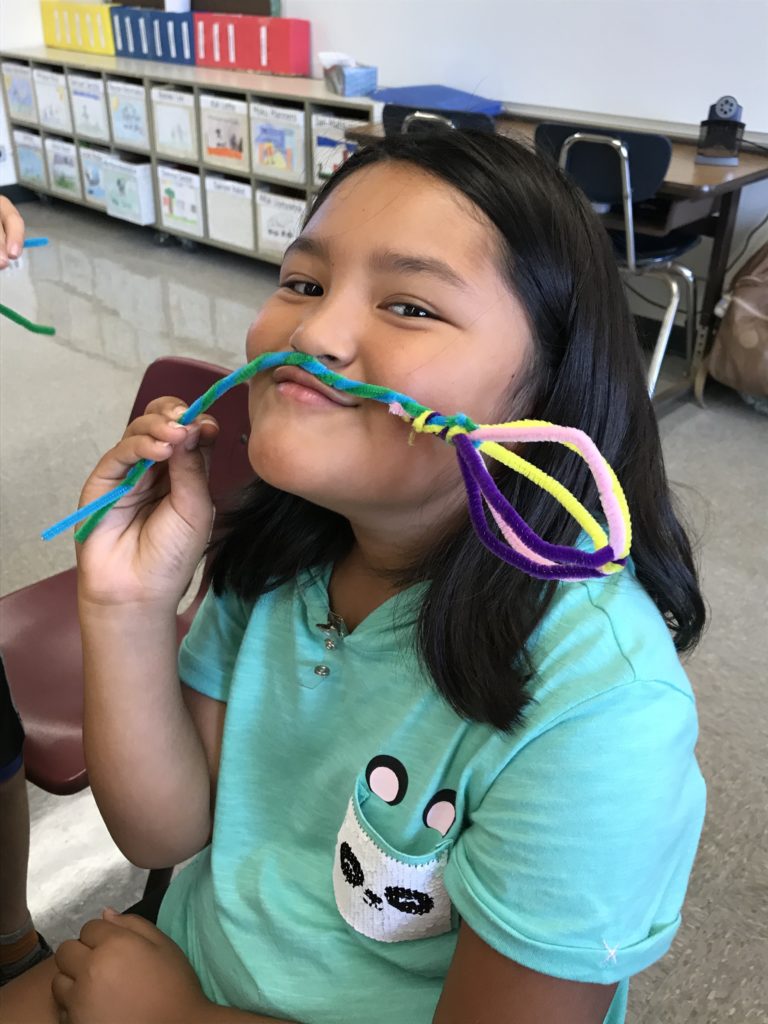
Giant squids have some neurons that are large enough to observe with the naked eye…
LEARN MORE: La Alegría de la Ciencia
LEARN MORE: Seven-foot squid caught off Kona coast
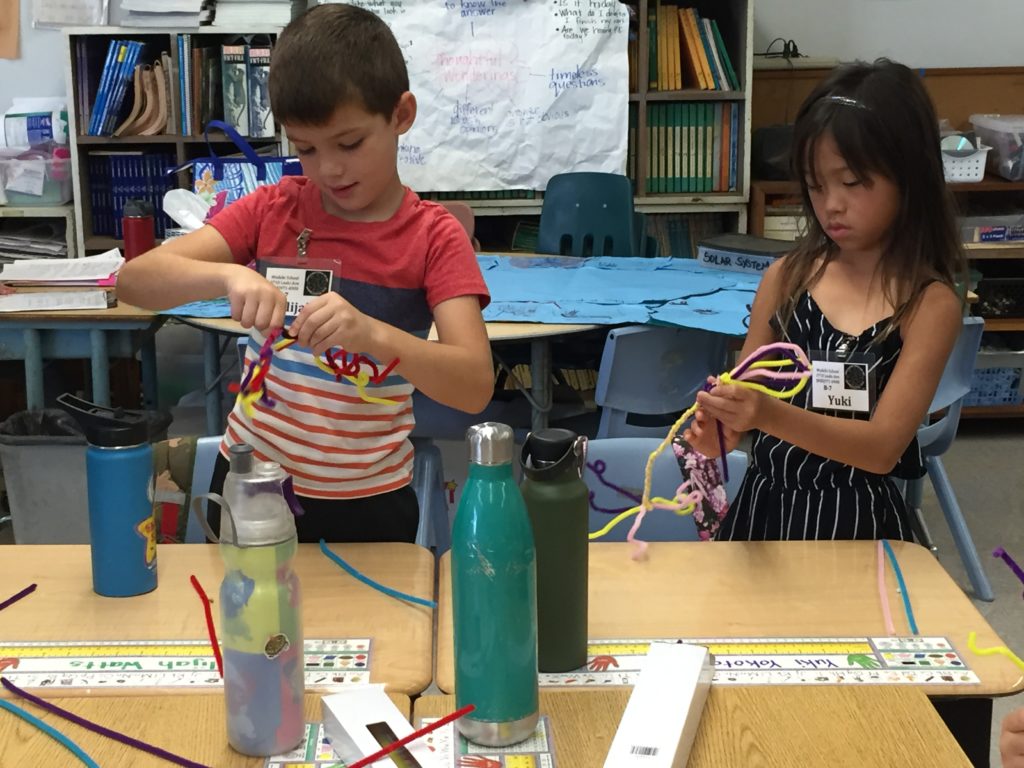
Mahalo nui loa (thank you very much) to Waikiki Elementary School and Hawaii Pacific Neuroscience for welcoming us into your ohana (family) and allowing us to be kumu (teachers) for a day. And thank you students for your inspiring (and adorable) letters!
